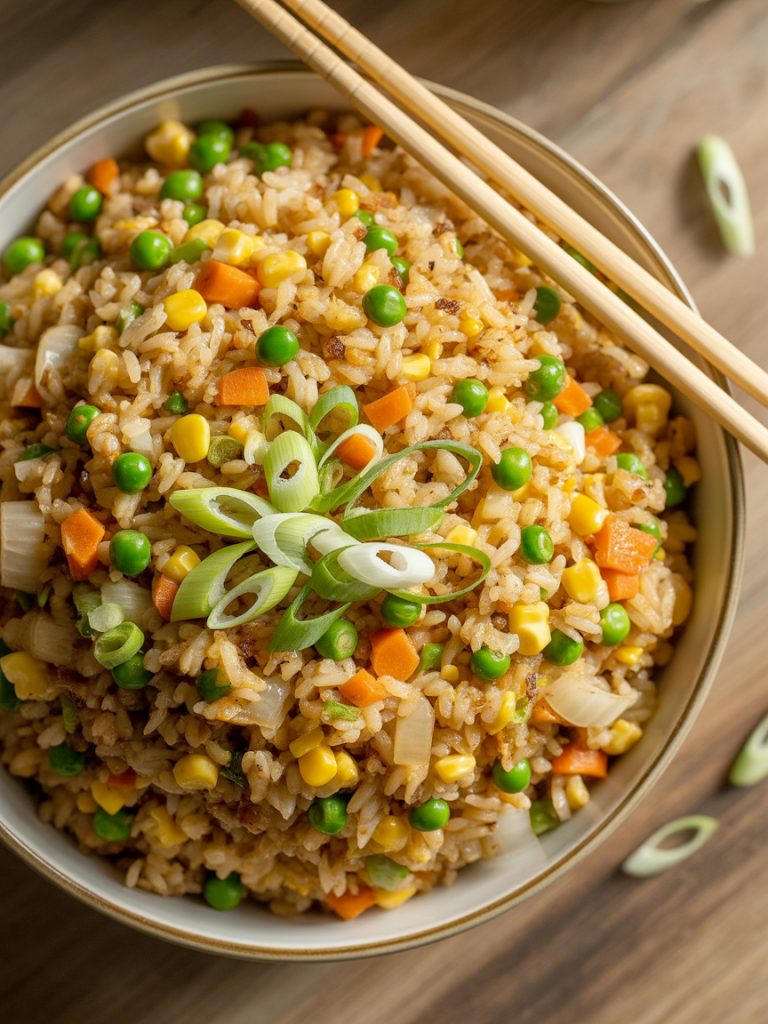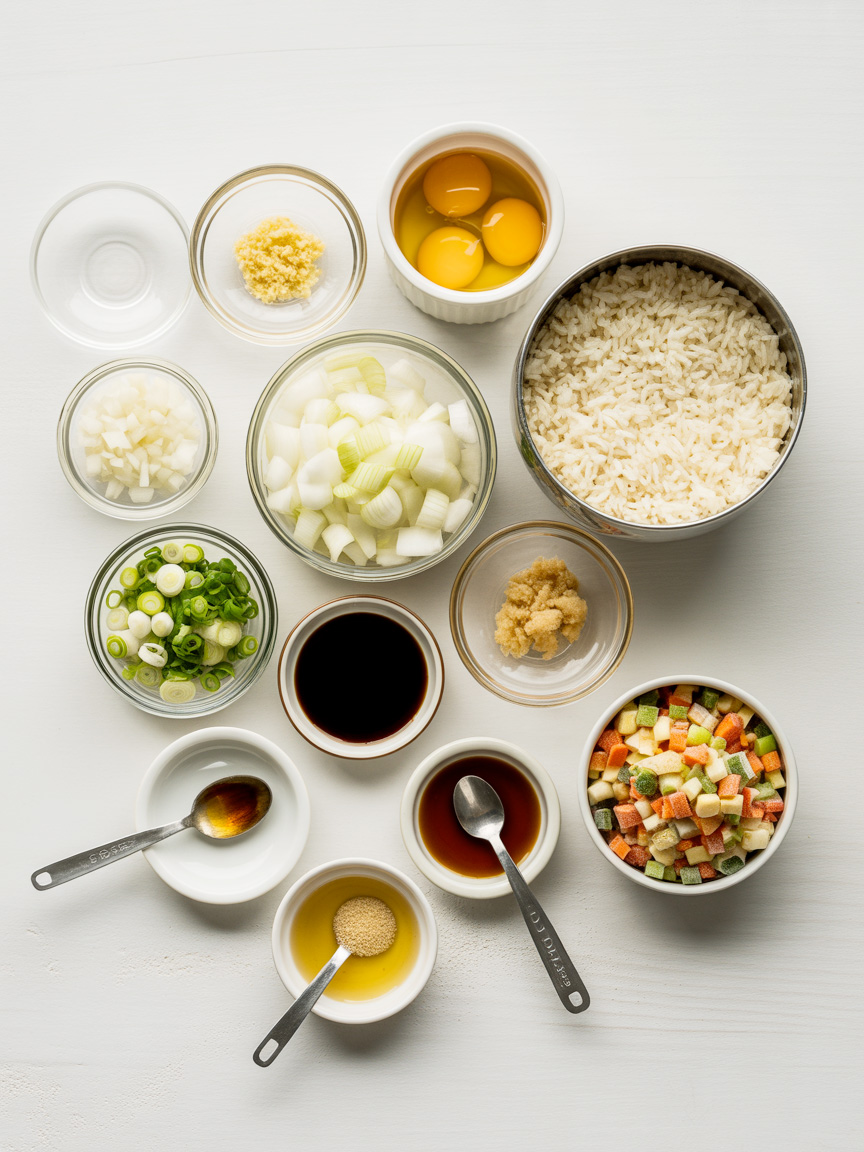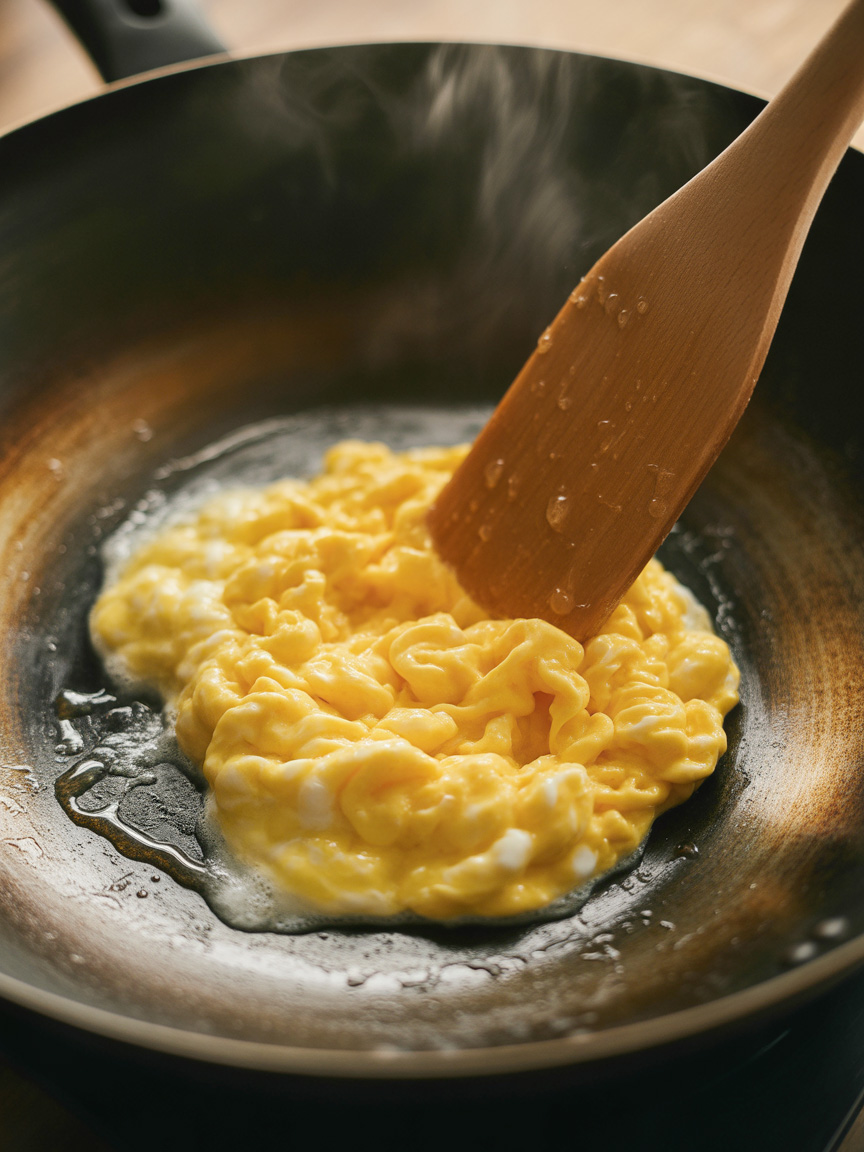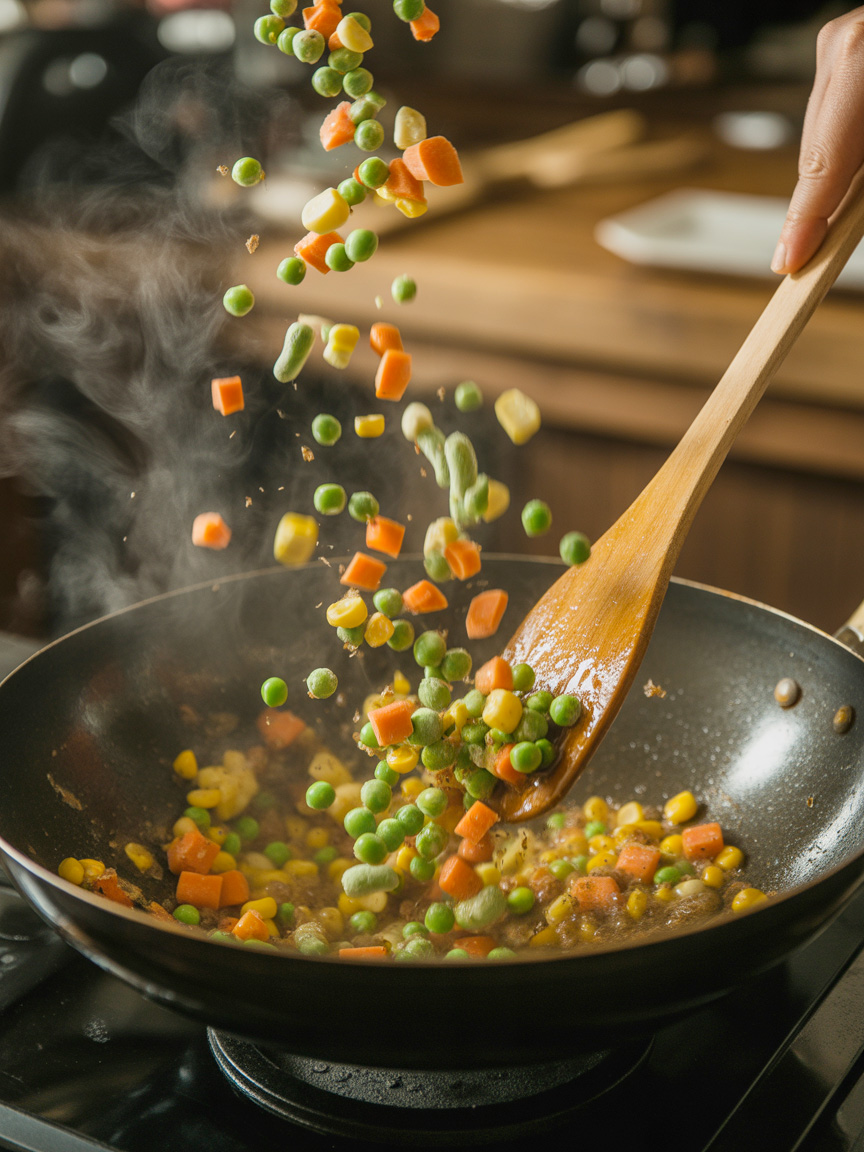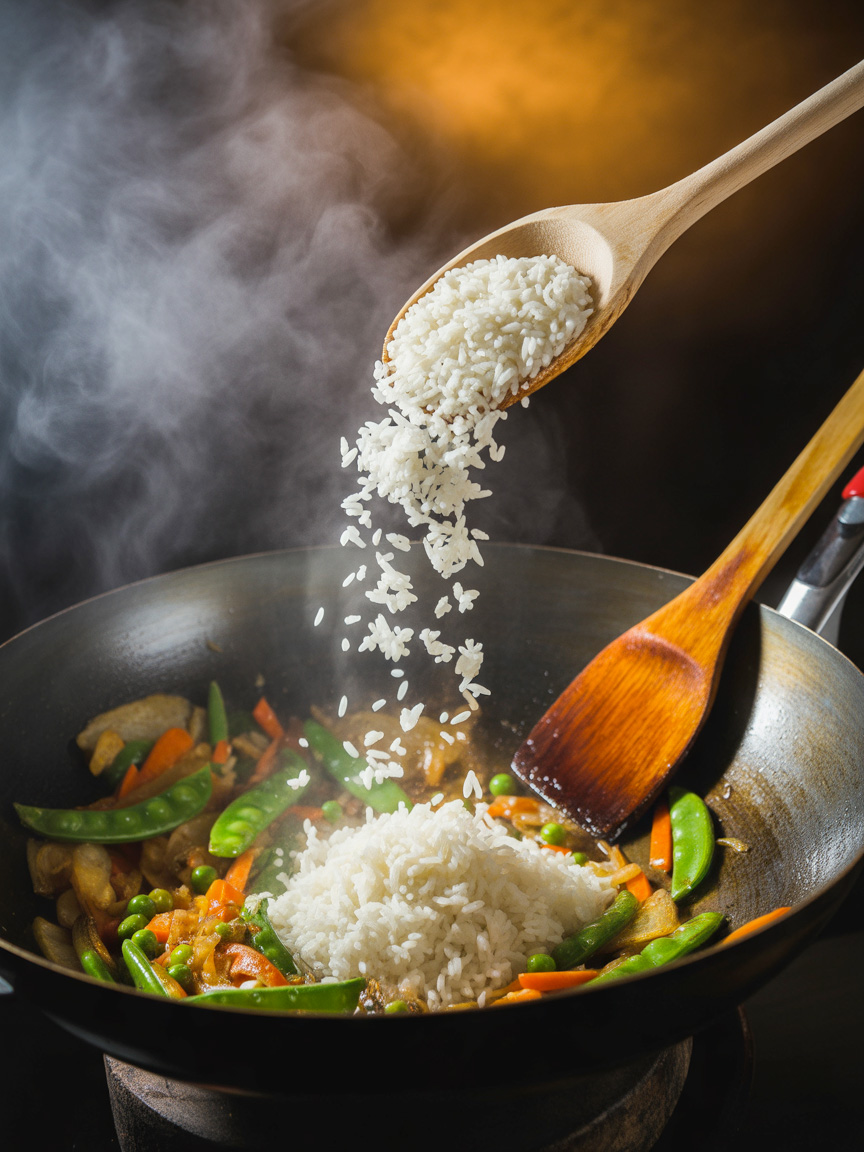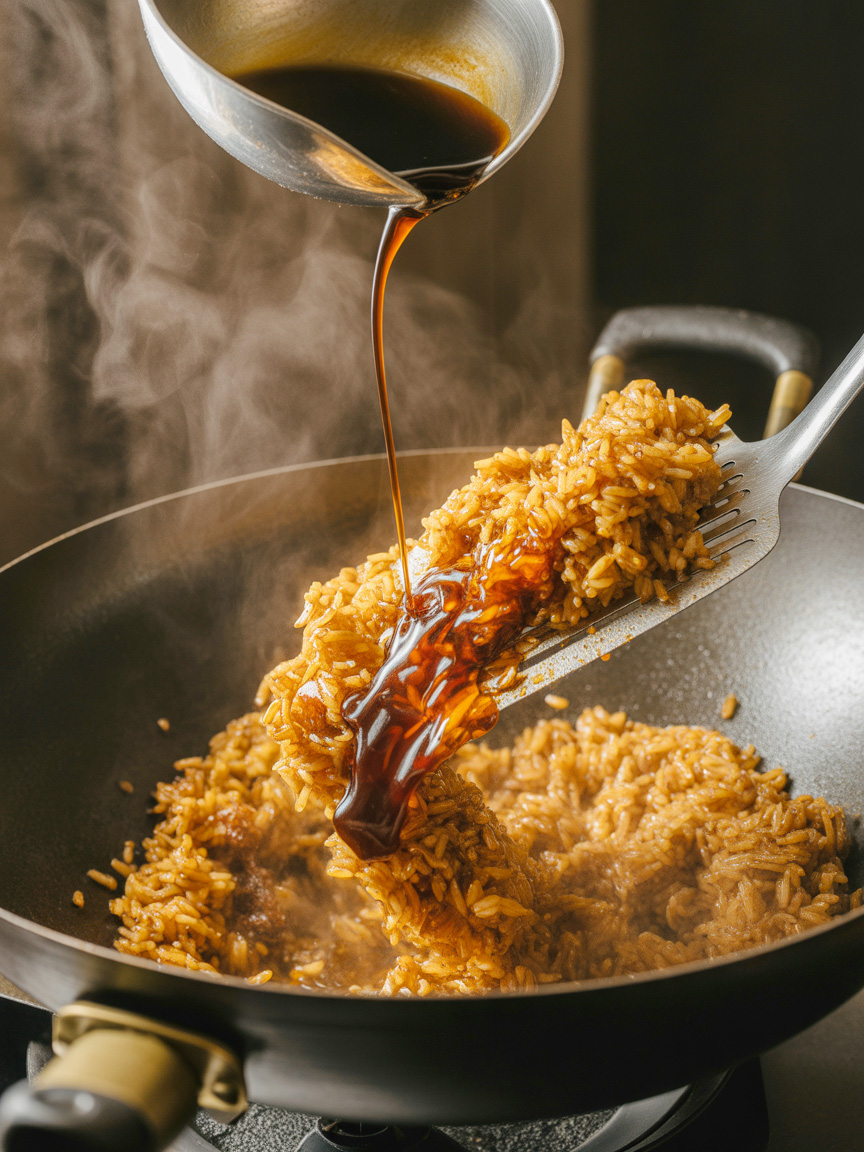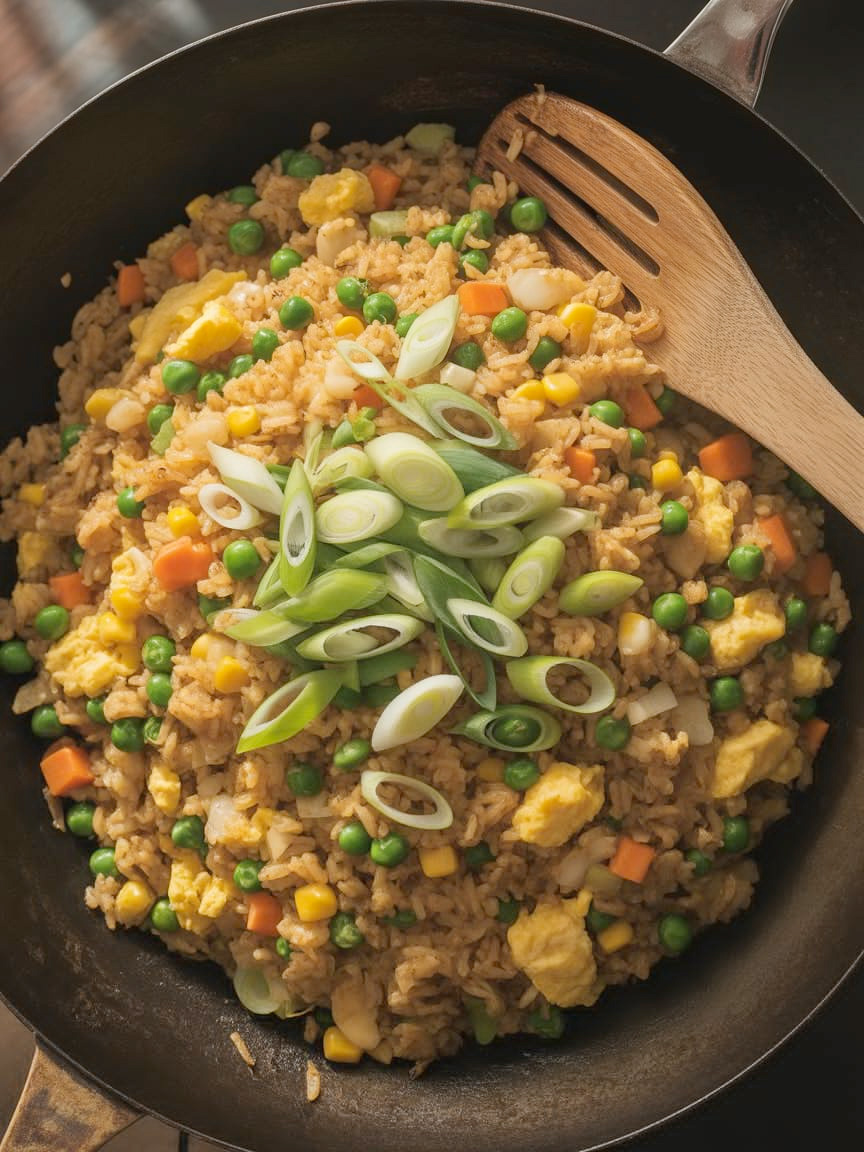Let’s talk about one of the most useful recipes you’ll ever learn—homemade fried rice that’s legitimately better than takeout. I’m not just saying that to sound impressive. This recipe actually delivers restaurant-quality fried rice in your own kitchen, and it takes less time than driving to pick up Chinese food.
The secret? Day-old rice, high heat, and a few simple ingredients that probably already live in your fridge and pantry. You get fluffy grains of rice with that perfect slightly crispy texture, scrambled eggs mixed throughout, colorful veggies, and that savory soy sauce flavor that makes fried rice so addictive. Every bite is packed with flavor, and the whole thing comes together in about 15 minutes of actual cooking time.
I learned to make fried rice out of pure necessity. I had leftover rice taking up space in my fridge, random vegetables that needed using, and absolutely zero desire to order delivery. I threw everything in a hot pan, and honestly? It turned out better than anything I’d gotten from a restaurant. That’s when I realized fried rice isn’t just a side dish—it’s the ultimate flexible, forgiving, use-what-you-have meal that always tastes incredible.
Whether you’re trying to use up leftovers, need a quick weeknight dinner, want to sneak more vegetables into your diet, or just love good fried rice, this recipe is about to become your go-to. It’s one of those skills that once you master it, you’ll wonder how you ever lived without it.
Why This Fried Rice Recipe is the Best
I’ve tried a lot of fried rice recipes over the years, and this one consistently delivers the best results. Here’s why this recipe works so well and why you’ll be making it over and over.
Incredibly Fast and Simple
Fifteen minutes. That’s genuinely all the time you need once you’ve got your ingredients prepped and ready. The actual cooking happens fast over high heat—you’re talking maybe 8-10 minutes of active stir-frying.
There’s no complicated technique, no special equipment beyond a large skillet or wok, and no long list of hard-to-find ingredients. It’s straightforward cooking that anyone can master, even if you’ve never made fried rice before. This is faster than waiting for delivery and way cheaper too.
Perfect for Leftovers
This is hands down the best way to use leftover rice. In fact, day-old rice works better than fresh rice because it’s drier and less sticky, which means it fries up perfectly instead of turning into a mushy mess.
Got leftover vegetables? Toss them in. Leftover cooked chicken, shrimp, or pork? Perfect protein addition. This recipe transforms random leftovers into a cohesive, delicious meal that feels intentional rather than thrown together. It’s the ultimate fridge-cleanout recipe.
Totally Customizable
This is where fried rice really shines. The base recipe is fantastic, but you can adapt it to whatever you have or whatever you’re craving. Want it vegetarian? Skip the meat and load up on veggies.
Prefer shrimp? Add it. Craving something spicy? Toss in some chili paste or sriracha. Got kids who hate certain vegetables? Swap them out. The technique stays the same regardless of what ingredients you use, which means once you nail the basics, you can riff on it forever and never get bored.
Budget-Friendly Meal
Rice is cheap. Eggs are cheap. Frozen mixed vegetables are cheap. Soy sauce lasts forever. You’re looking at a complete meal for four people that costs under twelve bucks, often less if you’re using up ingredients you already have.
Compare that to ordering fried rice from a restaurant where you’re paying $10-15 per order plus delivery fees and tip. IMO, learning to make fried rice at home is one of the best money-saving cooking skills you can develop, especially if you cook rice regularly and always have leftovers.
Your Simple Ingredient Checklist
The beauty of fried rice is how few ingredients you actually need. Everything here is either a pantry staple or something you probably already have in your fridge. Let’s break it down.

The Ingredient Lineup:
For the Rice:
- 4 cups cooked rice (preferably day-old and cold)
- 3 tablespoons vegetable oil (or any neutral oil)
For the Eggs:
- 3 large eggs
- Pinch of salt
For the Vegetables:
- 1 cup frozen mixed vegetables (peas, carrots, corn)
- ½ cup diced onion
- 2 cloves garlic (minced)
- 2 green onions (sliced, white and green parts separated)
For the Sauce:
- 3 tablespoons soy sauce (or tamari for gluten-free)
- 1 tablespoon oyster sauce (optional but recommended)
- 1 teaspoon sesame oil
- ½ teaspoon white pepper (or black pepper)
Optional Add-ins:
- Cooked protein (chicken, shrimp, pork, tofu)
- Additional vegetables (bell peppers, broccoli, mushrooms)
- Chili paste or sriracha for heat
- Fresh ginger for extra flavor
Ingredient Tips and Substitutions:
Rice: This is crucial—use day-old rice that’s been refrigerated. Fresh, hot rice is too moist and sticky, and it’ll turn into a clumpy mess when you try to fry it. The cold rice has dried out slightly, and the grains separate easily, which is exactly what you want. If you don’t have leftover rice, cook fresh rice and spread it on a baking sheet to cool quickly, then refrigerate for at least an hour. White rice is traditional, but brown rice, jasmine rice, or even cauliflower rice work. You need about 4 cups cooked, which is roughly 1.5 cups uncooked rice.
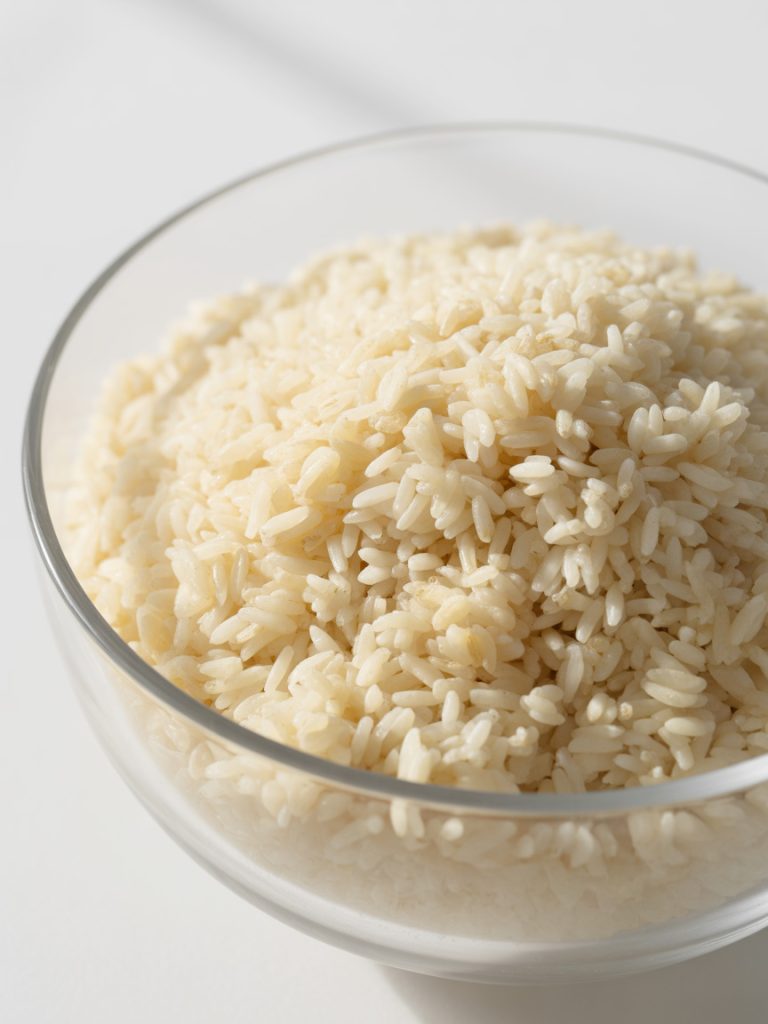
Oil: Vegetable oil, canola oil, or peanut oil all work great because they have high smoke points and neutral flavors. You need oil that can handle high heat without burning. Avoid olive oil—it has a low smoke point and will burn before your rice gets properly fried. Sesame oil is for flavoring at the end, not cooking, because it burns easily.
Eggs: Fresh eggs scrambled right in the pan add protein and that classic fried rice texture. If you’re vegan or have an egg allergy, you can skip them entirely and the rice will still be delicious. Some people like to scramble the eggs separately and set them aside, but I prefer cooking them right in the pan—it’s faster and creates fewer dishes.
Vegetables: Frozen mixed vegetables are the MVP here. They’re pre-cut, pre-blanched, and incredibly convenient. You can use fresh vegetables too—just make sure they’re cut small and relatively quick-cooking. Onions and garlic are essential for flavor base. Green onions add freshness and color at the end. Feel free to add bell peppers, snap peas, broccoli, mushrooms, bean sprouts—whatever you like or whatever needs using up.
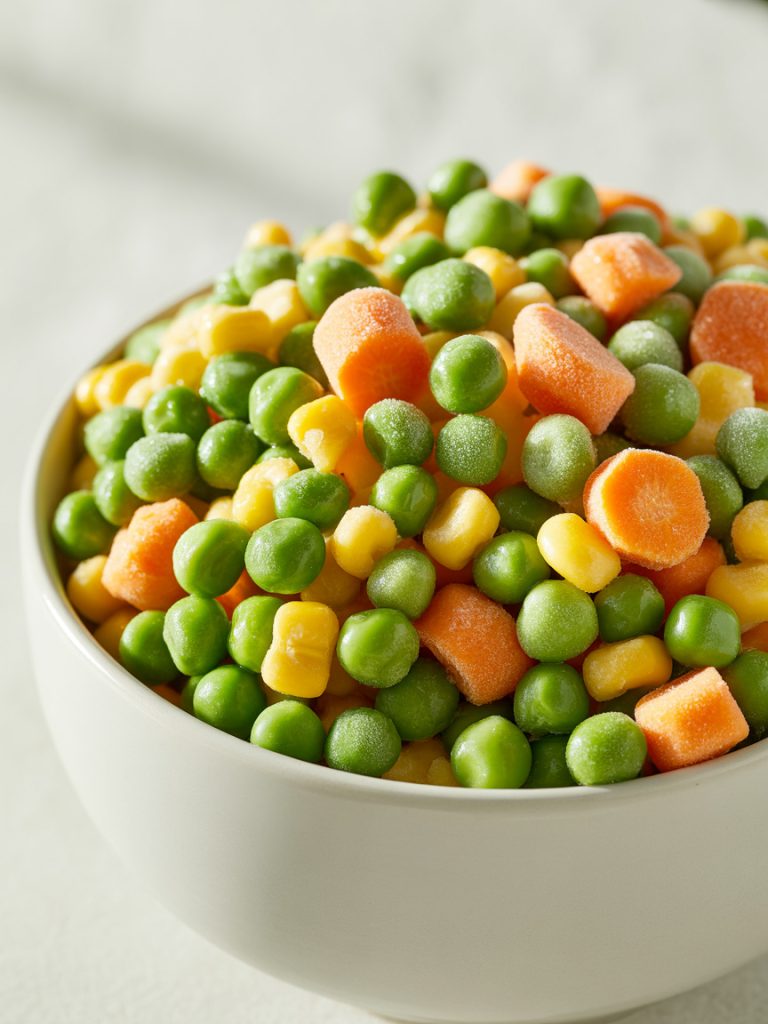
Soy Sauce: This is your main seasoning, so use good quality soy sauce. Low-sodium works great if you want to control the salt level. For gluten-free, use tamari or coconut aminos. Dark soy sauce adds deeper color, light soy sauce is saltier—I usually use regular soy sauce because it’s what most people have. Start with less than you think you need; you can always add more but you can’t take it away.
Oyster Sauce: This adds a rich, savory depth that really elevates fried rice. It’s slightly sweet and umami-packed. You can find it in the Asian section of most grocery stores. If you don’t have it or you’re vegetarian, skip it or use hoisin sauce or extra soy sauce. Vegetarian oyster sauce made from mushrooms exists too.
Sesame Oil: A little goes a long way. This is for flavor, not cooking. That nutty, toasty aroma is signature to Asian cooking. Don’t skip it if you want authentic-tasting fried rice. One teaspoon is enough—more than that can be overwhelming.
White Pepper: This is traditional in Chinese cooking and has a slightly different flavor than black pepper—more pungent and less sharp. But honestly? Black pepper works fine if that’s what you have. Most people won’t notice the difference.
Step-by-Step Cooking Instructions
Alright, let’s make some incredible fried rice. The key here is having everything prepped and ready before you start cooking, because once you begin, things move fast. This is true stir-frying—high heat, constant movement, quick cooking.
Part 1: Prep Your Ingredients
Prep Everything First: This is important. Before you turn on the stove, make sure everything is chopped, measured, and ready to go. Break up your cold rice with your hands so there are no clumps—the grains should be separate. Dice your onions, mince your garlic, slice your green onions, beat your eggs, measure your sauces. Have everything within arm’s reach of your stove. Once you start cooking, you won’t have time to stop and chop something.
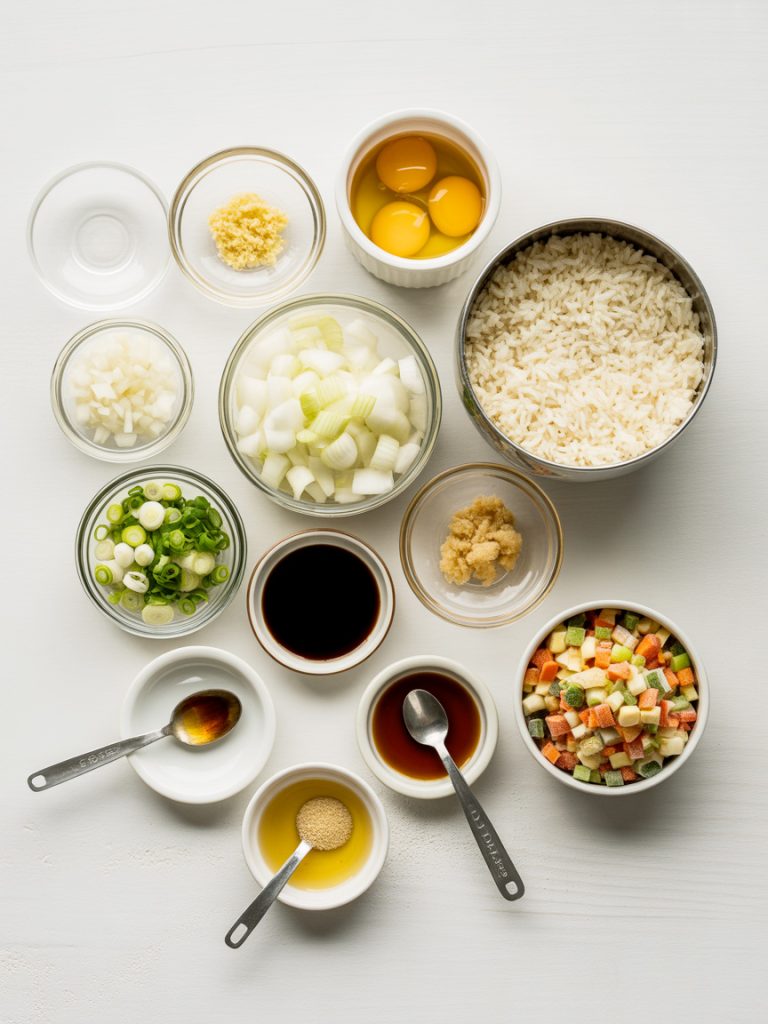
Break Up the Rice: Take your cold rice and use your hands to break up any clumps. You want individual grains that will fry separately. If the rice is really stuck together, you can microwave it for 30 seconds to loosen it up, then let it cool again. The rice should feel dry to the touch, not wet or sticky.
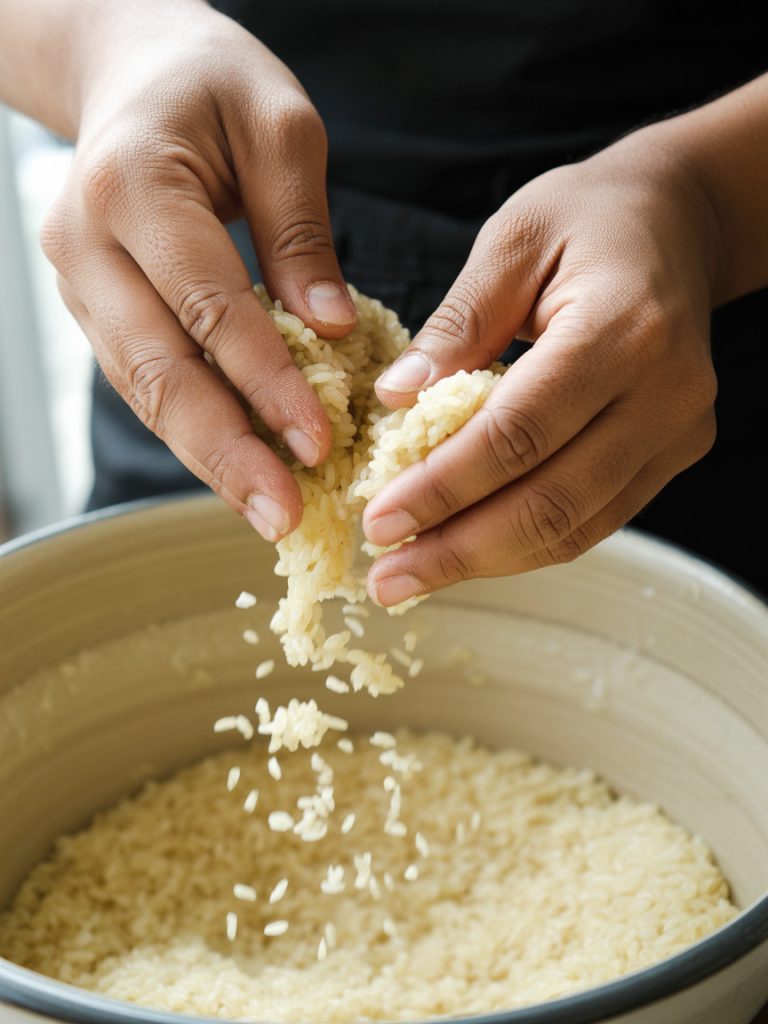
Beat the Eggs: Crack your eggs into a small bowl, add a pinch of salt, and beat them well with a fork until completely combined. Set aside where you can grab them quickly.
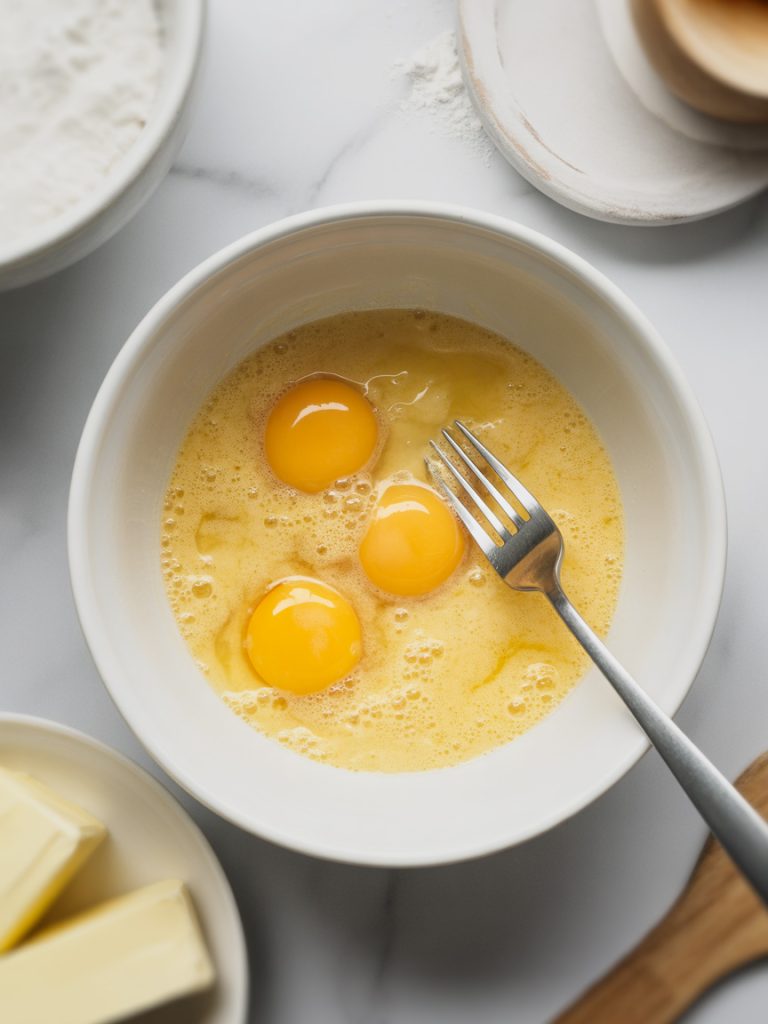
Organize Your Station: Have your rice, beaten eggs, vegetables, aromatics (garlic, onion, green onion whites), and sauce ingredients all laid out near your stove. This is called mise en place, and it makes the actual cooking smooth and stress-free.
Part 2: Stir-Fry and Combine
Heat Your Pan: This is crucial—you need HIGH heat. Heat your wok or large skillet over high heat until it’s very hot. Add 1 tablespoon of oil and swirl to coat. The pan should be hot enough that a drop of water sizzles immediately. This high heat is what creates that slightly smoky, restaurant-quality flavor.

Scramble the Eggs: Pour in your beaten eggs. Let them sit undisturbed for about 10 seconds until they start to set on the bottom, then scramble them with your spatula, breaking them into small pieces. They should cook in about 30-45 seconds. Once they’re just cooked through (still slightly soft is fine), push them to the side of the pan or remove them temporarily to a plate.
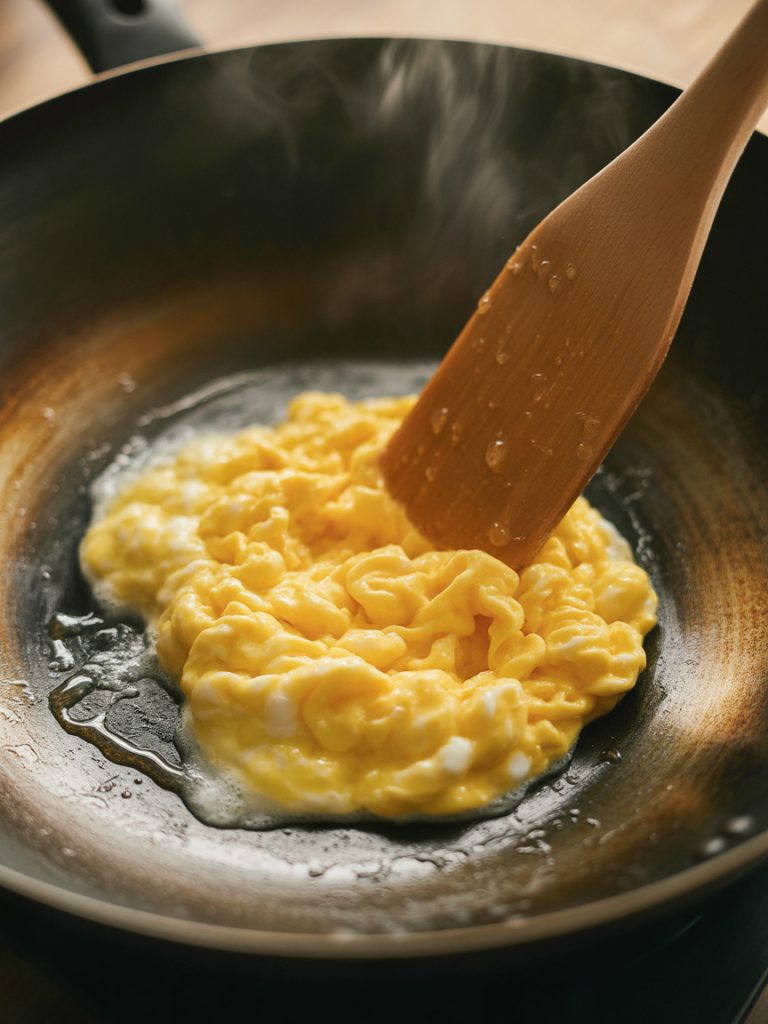
Cook the Aromatics: Add another tablespoon of oil to the pan. Add the diced onions and cook for about 1 minute until they start to soften. Add the minced garlic and the white parts of the green onions. Stir constantly for about 30 seconds until incredibly fragrant. Don’t let the garlic burn—if your heat is too high and things are burning, reduce it slightly.
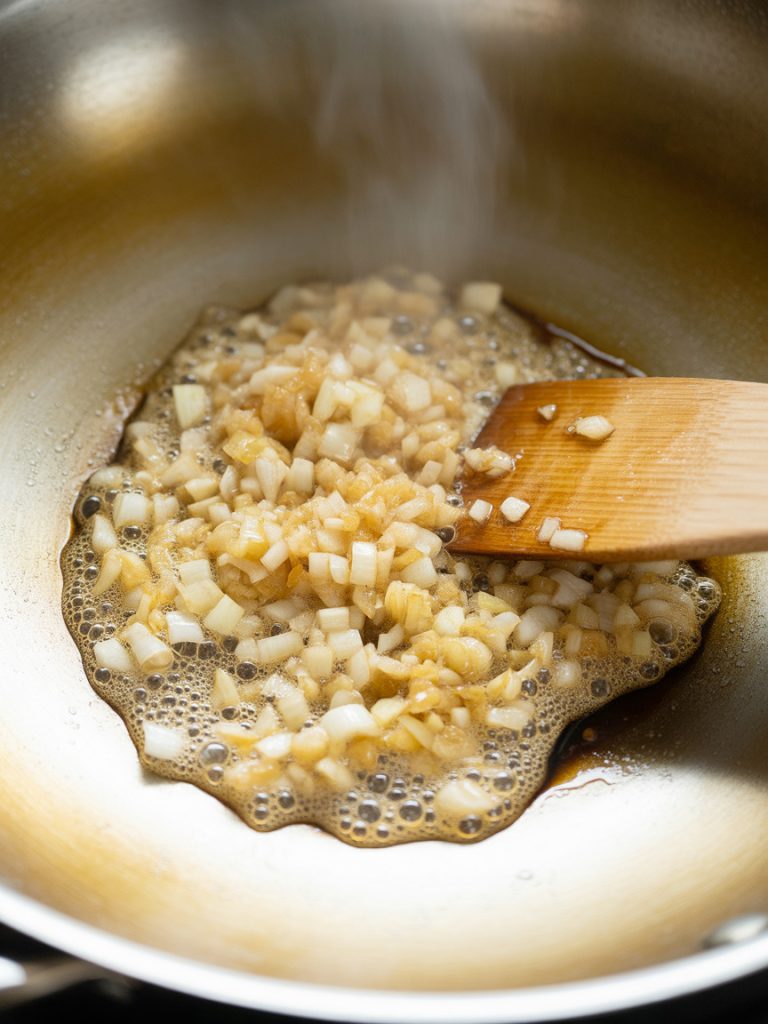
Add Vegetables: Toss in your frozen mixed vegetables (no need to thaw them first). Stir-fry for 2-3 minutes until they’re heated through and any excess moisture has evaporated. If you’re using fresh vegetables, they might need a bit longer depending on what they are.
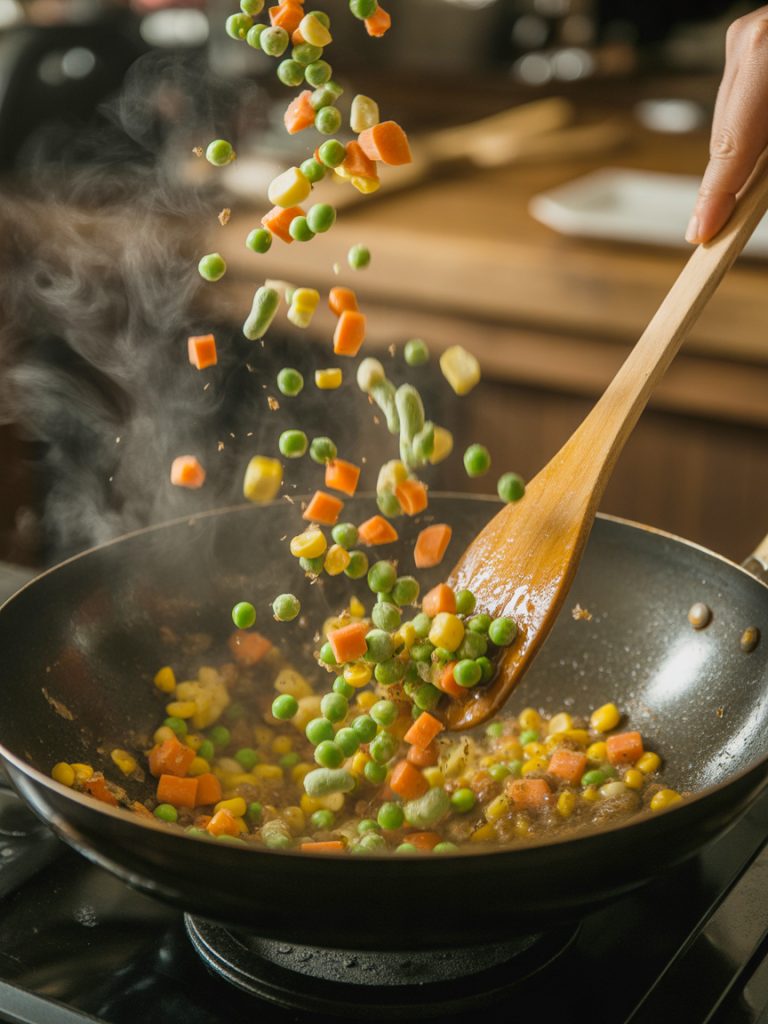
Add the Rice: Add your cold, broken-up rice to the pan. This is where the magic happens. Use your spatula to press the rice against the hot pan and then flip it. You want to expose as much rice as possible to the hot surface.

Keep stirring and tossing for 3-4 minutes. The rice should start to look slightly toasted and some grains might get a little crispy. If the rice is sticking badly, add another tablespoon of oil.
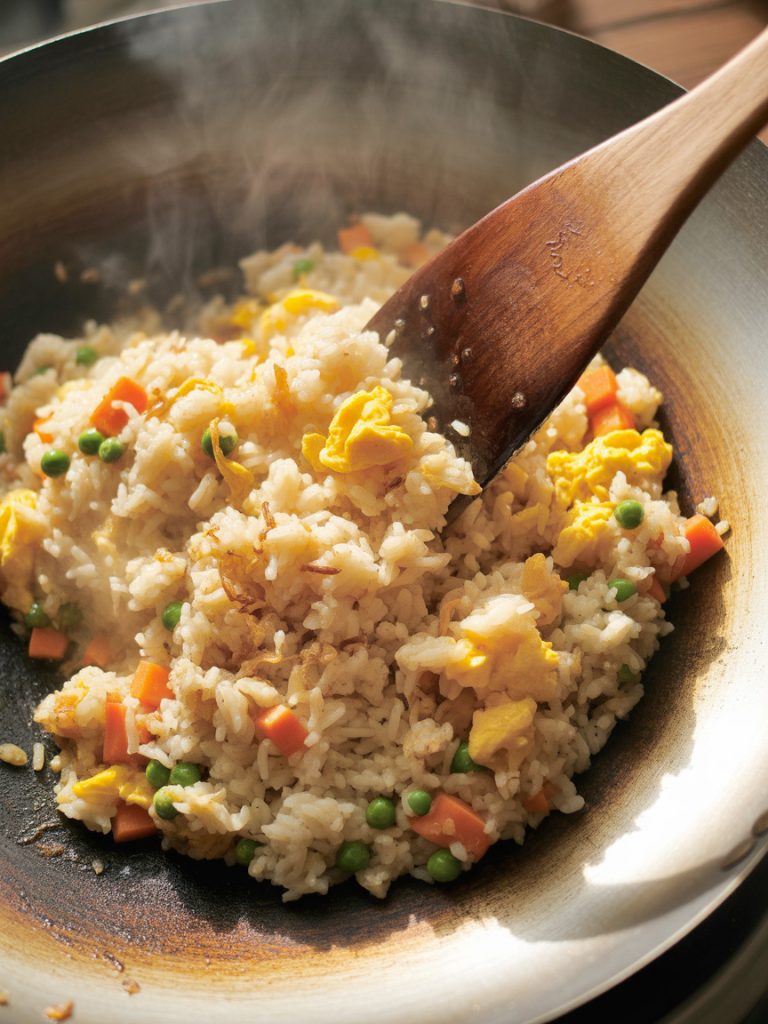
Add the Sauce: Drizzle the soy sauce and oyster sauce over the rice. Toss everything together quickly to distribute the sauce evenly. The rice should turn a light golden-brown color and smell incredible. Add the white pepper and toss again. Taste and adjust seasoning—add more soy sauce if it needs salt, or a pinch of sugar if it’s too salty.
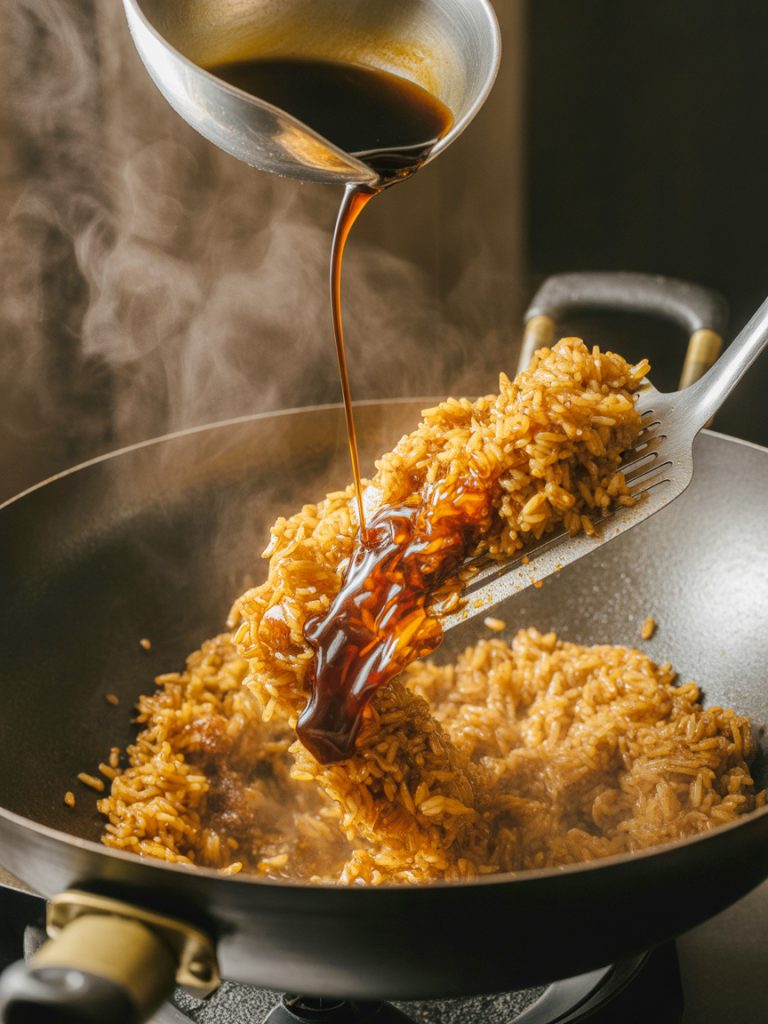
Finish with Eggs and Sesame Oil: Break up the scrambled eggs if you set them aside, and toss them back in with the rice. Drizzle the sesame oil over everything and give it one final toss. Turn off the heat. Add the green parts of the sliced green onions and toss one more time.
Serve Immediately: Fried rice is best served hot right out of the pan. Scoop into bowls or plates and serve with extra soy sauce, sriracha, or chili oil on the side for people to customize their heat level.
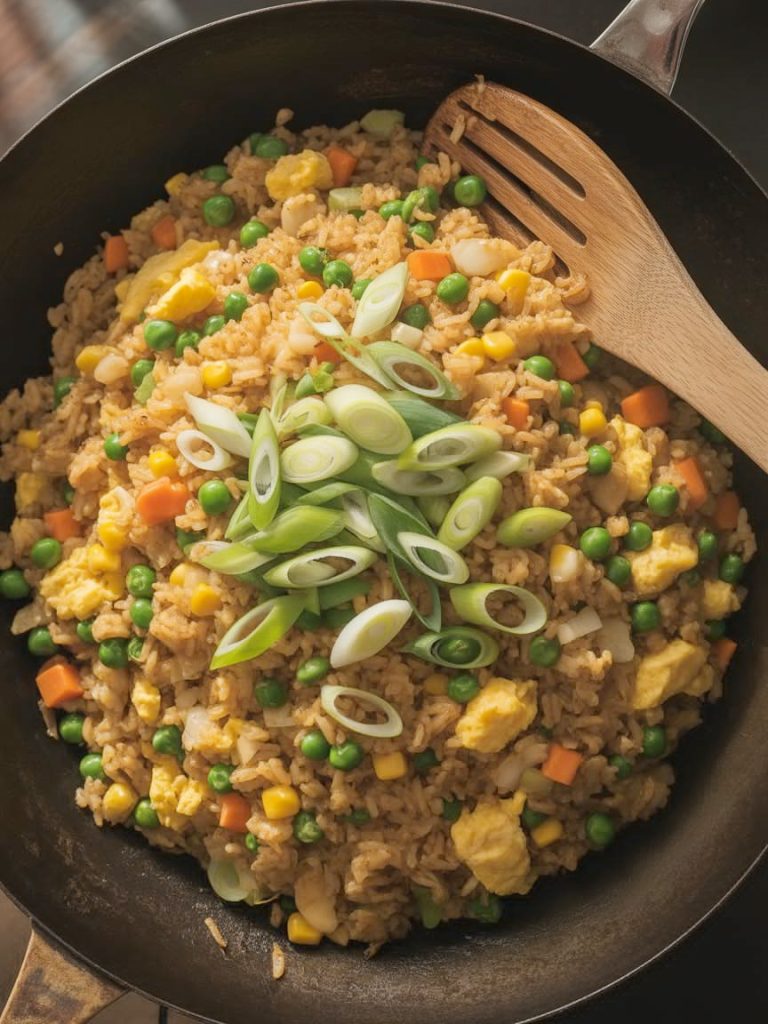
Serving Suggestions
Fried rice is incredibly versatile. Here are some ways to serve it and variations to try:
As a Main Dish: Serve the fried rice as a complete meal on its own. It’s got protein from the eggs, carbs from the rice, and vegetables all in one bowl. Add extra protein like grilled chicken, shrimp, or tofu to make it even more substantial.
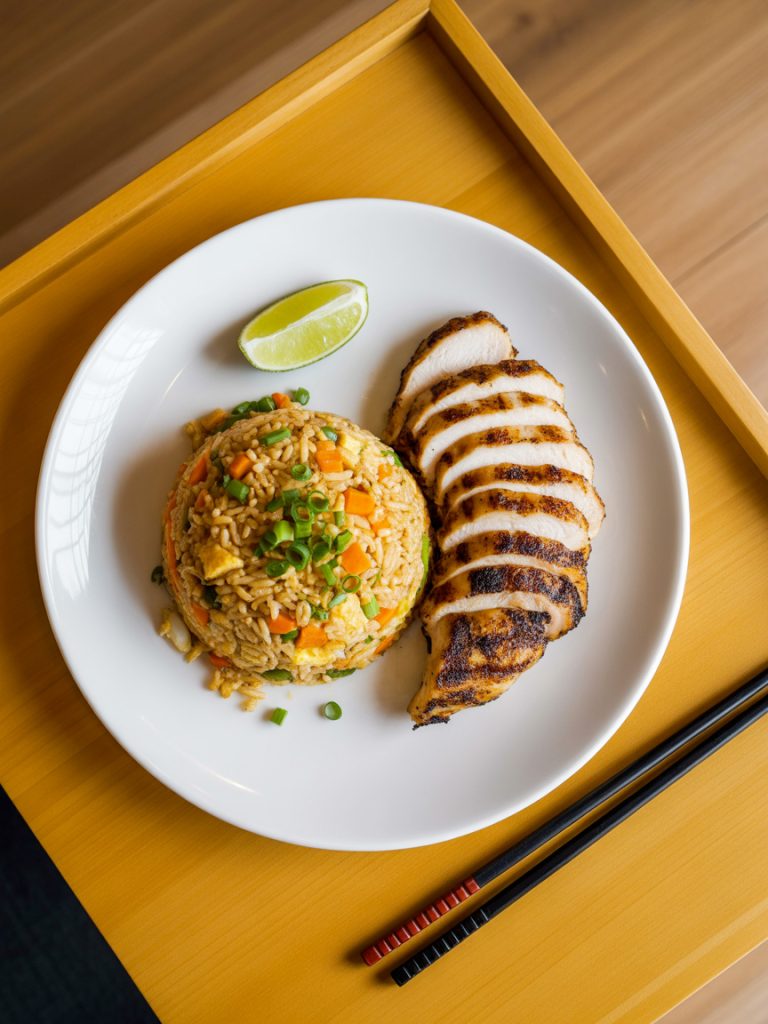
With Asian Proteins: Pair with teriyaki chicken, orange chicken, sweet and sour pork, or sesame shrimp for a full Chinese takeout experience at home.
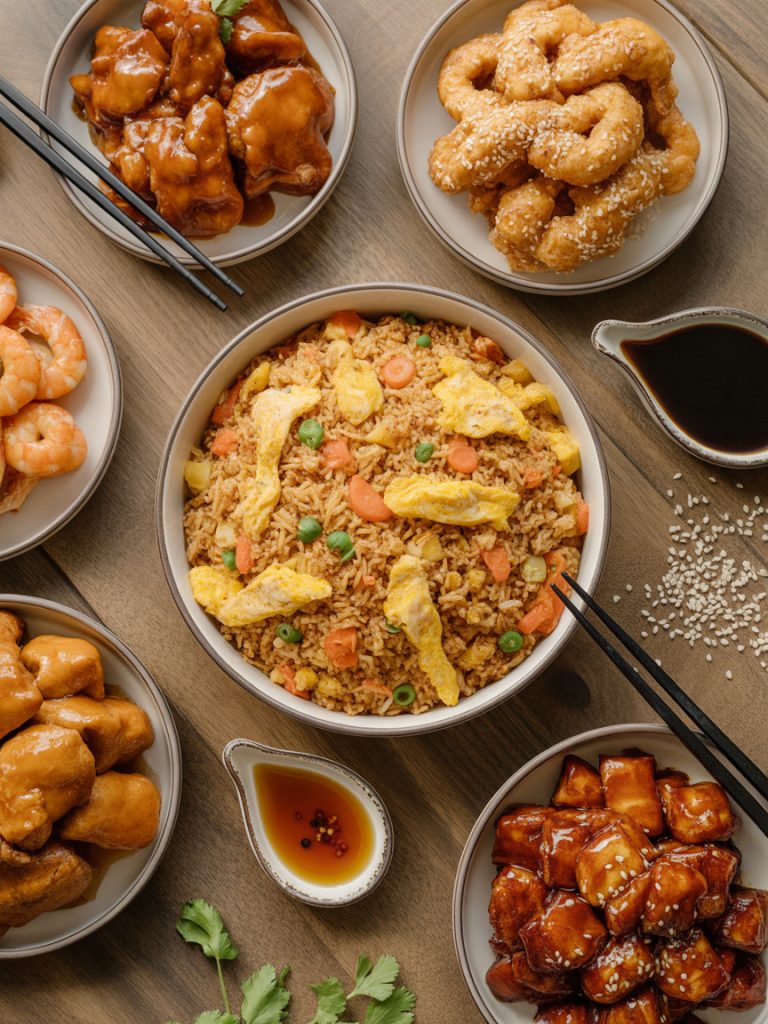
Add More Protein: Stir in diced cooked chicken, shrimp, pork, beef, or cubed tofu during the vegetable cooking stage. Leftover rotisserie chicken is perfect for this.
Spicy Version: Add chili paste, sriracha, or fresh sliced chili peppers to the rice while cooking. Drizzle with chili oil before serving for extra heat.
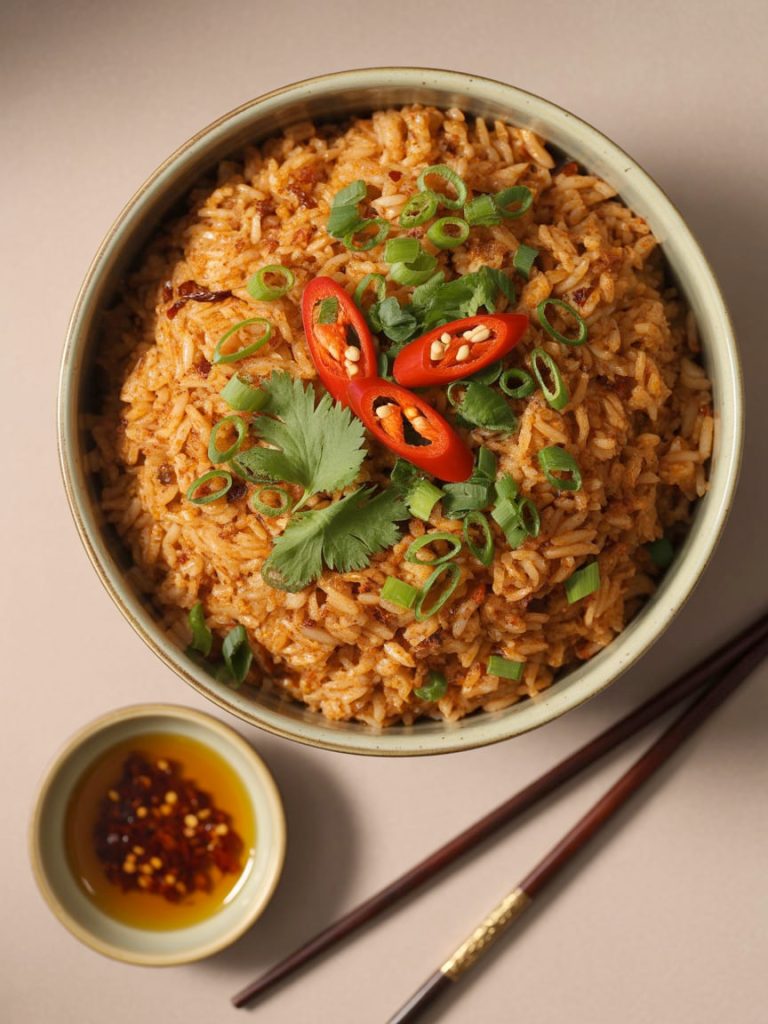
Pineapple Fried Rice: Add chunks of fresh pineapple and cashews for a sweet-savory Thai-inspired version. It sounds weird but it’s amazing.
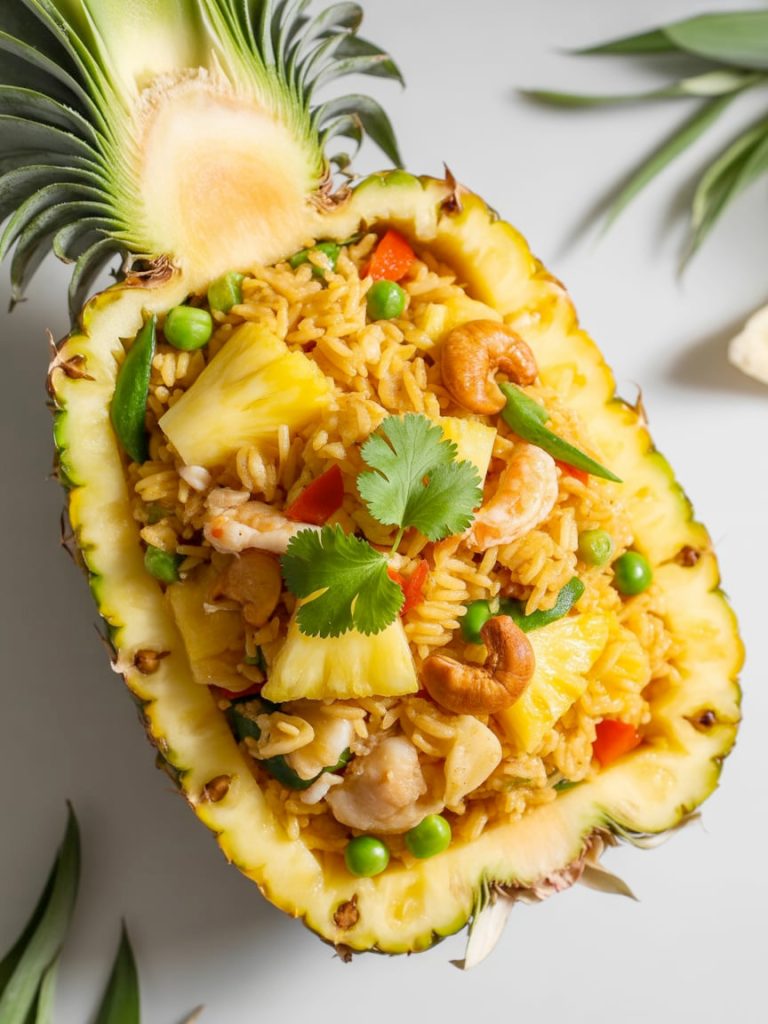
Kimchi Fried Rice: Stir in chopped kimchi for a Korean twist with tangy, spicy flavors. Top with a fried egg.
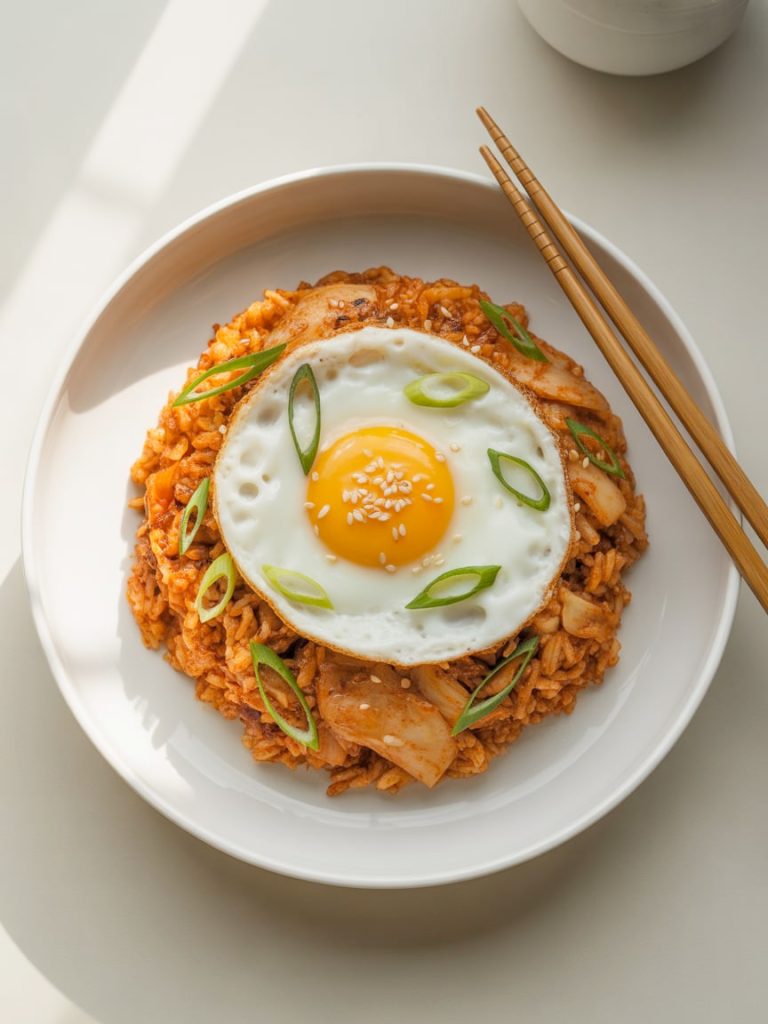
Breakfast Fried Rice: Top with a fried egg, crispy bacon bits, and serve in the morning for a savory breakfast that’s way better than cereal.
Closing
This fried rice recipe is one of those kitchen skills that genuinely makes your life easier. Once you know how to make it, you’ve got a solution for leftover rice, random vegetables in your fridge, and those nights when you want something quick but satisfying. It’s faster than delivery, cheaper than takeout, and honestly tastes better because you control exactly what goes in it.
The beauty of fried rice is that it’s endlessly adaptable. The base technique stays the same, but you can change up the vegetables, proteins, and seasonings to keep things interesting. You’ll never get bored because it’s different every time based on what you have available. That’s the kind of flexible, practical cooking that actually fits into real life.
Make this recipe once and I guarantee it’ll become part of your regular rotation. You’ll start cooking extra rice on purpose just so you have leftovers for fried rice later in the week. That’s when you know a recipe is a keeper—when you plan around it instead of it feeling like a chore.
So grab that leftover rice from your fridge and give this a try. Your takeout habit might just become a thing of the past. 🙂
Happy cooking, and enjoy every delicious bite!
The Best Fried Rice: Better Than Takeout in 15 Minutes
Description
Restaurant-quality fried rice made at home with fluffy rice, scrambled eggs, crisp vegetables, and savory seasonings. This quick and versatile recipe is perfect for using leftover rice and easily customizable with any protein or vegetables you have on hand.
Ingredients
Instructions
-
Prep all ingredients before cooking. Break up cold rice with hands, beat eggs, dice vegetables, mince garlic, slice green onions (separate white and green parts).
-
Heat wok or large skillet over high heat. Add 1 tablespoon oil and swirl to coat.
-
Scramble eggs by pouring beaten eggs into hot pan. Let set for 10 seconds, then scramble into small pieces (30-45 seconds). Push to side or remove to plate.
-
Add 1 tablespoon oil to pan. Add diced onions and cook 1 minute. Add garlic and white parts of green onions, stir for 30 seconds until fragrant.
-
Add frozen vegetables and stir-fry for 2-3 minutes until heated through.
-
Add cold rice and final tablespoon of oil. Press rice against hot pan and toss constantly for 3-4 minutes until rice is heated through and slightly crispy.
-
Add soy sauce, oyster sauce, and white pepper. Toss to coat rice evenly. Mix scrambled eggs back in.
-
Turn off heat. Drizzle sesame oil over everything and toss. Add green parts of green onions and toss once more.
-
Serve immediately while hot with extra soy sauce or sriracha on the side.
Note
Rice is Key: Day-old refrigerated rice works best. Fresh rice is too moist and becomes mushy.
High Heat: Keep heat high throughout cooking for best texture and that slightly smoky flavor.
Quick Cooking: Have everything prepped before starting. Cooking happens fast once you begin.
Customization: Add any cooked protein (chicken, shrimp, pork, tofu) in step 5 with vegetables.
Storage: Store in airtight container in refrigerator for up to 4 days. Reheat in skillet or microwave. Can be frozen for up to 3 months.
Make it Vegan: Skip eggs and use tamari instead of oyster sauce.

